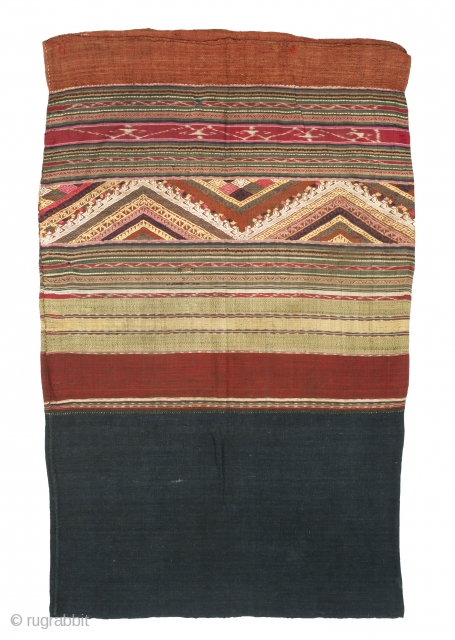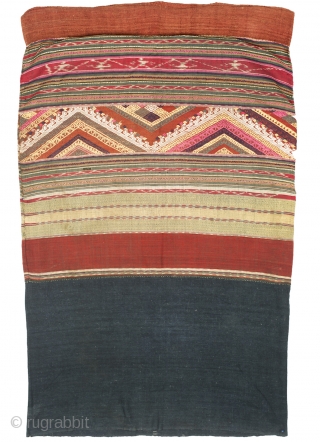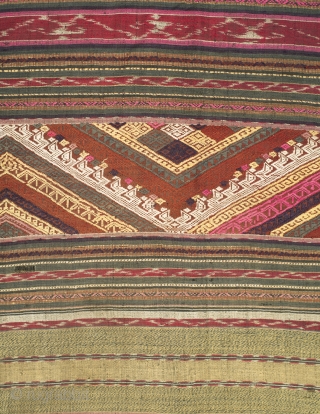Back
Name: Woman’s skirt/Ceremonial textile
Local Name: Sin mii kan
Ethnic Group: Tai Lue
Origin: Northwest Laos
Materials: Cotton, silk, natural and synthetic dyes
Techniques: Discontinuous supplementary weft, weft ikat
Age: Early 20th century
Size: 100 x 60 cm
Tubular skirts of Tai Lue women have distinctive features. The border is large and often composed of indigo-dyed cotton fabric. In the midsection, patterning is organized into horizontal rows. Two pieces of similarly-patterned cloth are required to form this skirt’s part. Thus, two side seams are present. The midsection of this skirt is primarily silk, indicating its use for special occasions. Weft patterning of an undulating line symbolizes a serpent deity that is connected to water. The other weft ikat pattern is a repeating human figure. Discontinuous supplementary weft patterns form multicoloured mountains. Heads of the naga serpent deity are in white.
price:
POR
- Home
- Antique Rugs by Region
- Category
- Profiles
- Post Items Free
- Albums
- Benaki Museum of Islamic Art
- Budapest: Ottoman Carpets
- Gulbenkian Museum
- Islamic Carpets. Brooklyn
- Islamic Textiles. Brooklyn
- Konya Museum: Rugs
- MKG, Hamburg
- MMA: Caucasian Carpets
- MMA: Mamluk Carpets
- MMA: Mughal Indian Carpets
- MMA: Ottoman Carpets
- MMA: Safavid Persian Carpets
- MMA: Turkmen Rugs
- McCoy Jones Kilims
- Ottoman textiles. Met
- Philadelphia Museum
- Rugs and Carpets: Berlin
- Seljuqs at the Met
- TIEM, Istanbul: Carpets
- V&A: Classical Carpets
- Vakiflar Carpets: Istanbul
- Baluch Rugs: Indianapolis
- Gallery Exhibitions
- Jaf an Exhibition
- Alberto Levi Gallery
- Andean Textile
- Christie's London: 2016
- Francesca Galloway
- HALI at 40
- ICOC Washington, DC 2018
- Jajims of the Shahsavan
- London Islamic Week April, 2018
- Mongolian Felts
- Navajo Rugs: JB Moore
- Persian Piled Weavings
- SF Tribal & Textile Art Show 2020
- SF Tribal 2019
- Sotheby's: C. Alexander
- Turkish Prayer Rugs
- Turkmen Main Carpets ICOC 2007











